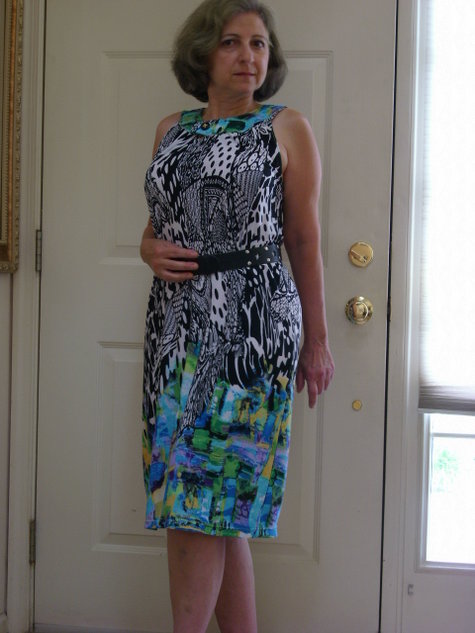Cool ties are woven cotton scarves that are filled with Miracle Grow Moisture absorbing beads. The beads are made of nylon, and look like coarse salt. These beads were designed to hold moisture when mixed with potting soil, but can increase cooling through evaporation when the cool ties are soaked in water before wearing. I purchased a small bag of Miracle Grow Moisture Absorbing Beads at the hardware store for about $8.
Cool ties are so easy and fast to make, that you may want some for your family, too. Since they only require 4" of 45" fabric, I used left over to create my cool tie. Our completed item will be similar in size and shape to a rectangular neck tie.
- Put selvages of fabric together, and straighten cut edges. Next cut a 4" strip from fold to selvage.
- With wrong sides together, fold cut fabric in half lengthwise, and press. Serge or overcast about 1/4" on the long side and on one short edge. Turn fabric tube right side out, and press.
- Fold cool tie in half, and mark the middle with a pin. Use additional pins to mark about 7.5" on either side of center.
- Sew from short edge to short edge at the pin closest to the sewn end. This will prevent moisture pellets from migrating to the tip of the scarf
- Next place a few teaspoons of moisture pellets in the open end of the scarf. Work the pellets toward the center of the scarf. This could get messy, and you may want to do this step out side. I found a small thread cone made a handy funnel for the moisture beads.
- Sew the remaining end of the cool tie closed. Work the moisture beads towards the center, then sew across the scarf at the second 7.5" pin mark. Sew across the center of the scarf, dividing the moisture beads into equal volumes in each half of the cool tie.
Here is the care label:
- immerse in cold water approx 60 min, until crystals
become gel
- tie around head or neck
- regenerate by soaking 1-3 minutes
- do not freeze
- dehydrate to store
- hand wash only, mild soap













